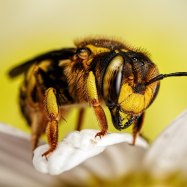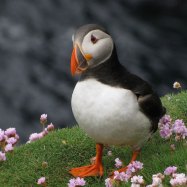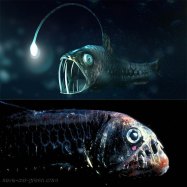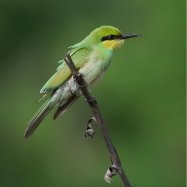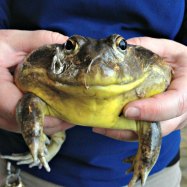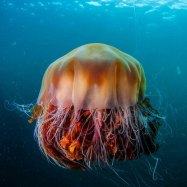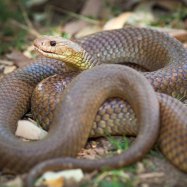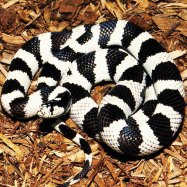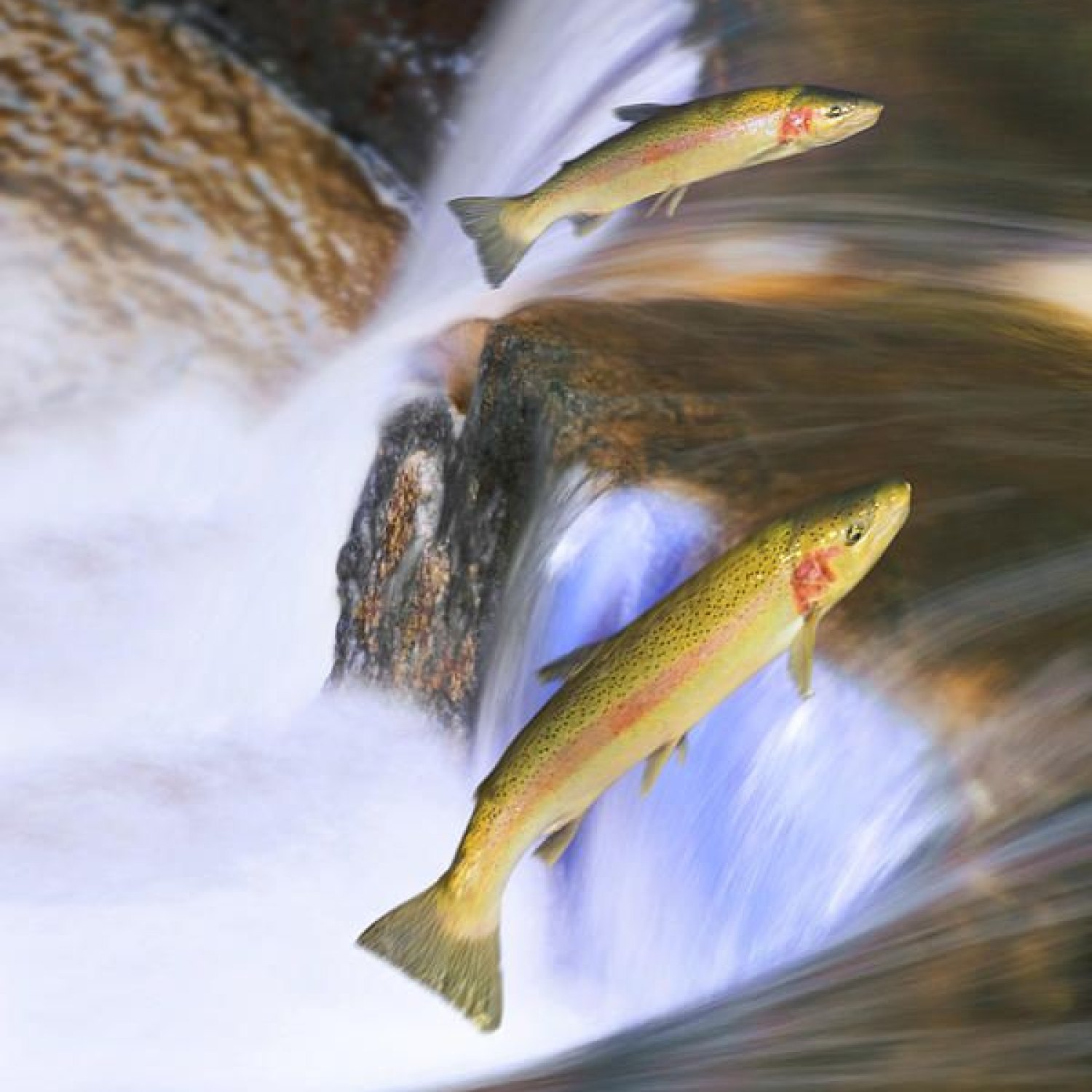
Steelhead Salmon
30 to 40 inches
The Steelhead Salmon, found in the Pacific Ocean and coastal rivers, belongs to the Salmonidae family. It can grow up to 30-40 inches in length and has a streamlined and fusiform body shape. These fascinating creatures are known for their impressive jumping abilities and are widely sought after by anglers for their challenging fight. Keep your eyes peeled for the Steelhead Salmon on your next fishing excursion. #SteelheadSalmon #PacificFishing #Salmonidae #CoastalRivers
Animal Details Summary:
Common Name: Steelhead Salmon
Kingdom: Animalia
Habitat: Freshwater rivers and streams
The Fascinating Life of Steelhead Salmon: A Master of Freshwater and Ocean
Deep in the cold, clear waters of North America and Northeast Asia, surrounded by lush forests and majestic mountains, lives a remarkable creature - the Steelhead Salmon. With its silver body and bluish-green back, this fish is not only a sight to behold but also a master of both freshwater and ocean habitats. In this article, we will dive into the fascinating world of Steelhead Salmon and uncover the secrets of its survival.Scientifically known as Oncorhynchus mykiss, Steelhead Salmon belongs to the Animalia Kingdom, the Chordata Phylum, and the Actinopterygii Class, making it a distant cousin of other fish species such as trout and char Steelhead Salmon. It is from the Salmoniformes Order and Salmonidae Family, which are characterized by their streamlined bodies and strong, muscular tails that help them swim against strong currents.
Found in freshwater rivers and streams, Steelhead Salmon is a carnivorous fish, which means its main source of food comes from other animals. With its strong jaws and sharp teeth, the Steelhead Salmon is a skilled hunter, preying on smaller fish, insects, and crustaceans. This diet is crucial in ensuring the fish's growth and survival, making it an important predator in the food chain.
Steelhead Salmon has a wide geographical distribution, with its origins in the United States and Canada. However, it is also found in other countries such as Russia, Japan, and South Korea, making it a globally recognized species. Its preferred location is in the Pacific Ocean and coastal rivers, where it can find the ideal conditions for its survival.
One of the most distinctive features of Steelhead Salmon is its coloration. As the name suggests, this fish has a sleek, silver body that glimmers in the sunlight Salmon Shark. However, it also has a bluish-green back, which serves as camouflage when swimming in the ocean to avoid predators. This dual coloration is essential for its survival in both freshwater and ocean habitats.
In terms of body shape, Steelhead Salmon has a streamlined and fusiform shape, which allows it to swim swiftly and effortlessly in the water. This is especially crucial during its annual migration from the ocean to freshwater rivers for spawning. With its powerful tail, it can swim against strong currents and overcome various obstacles along the way.
When fully grown, Steelhead Salmon can reach an impressive length of 30 to 40 inches. However, certain factors such as habitat, food availability, and genetic factors can affect its size. For instance, Steelhead Salmon that stay in freshwater for longer periods tend to grow bigger compared to those that remain in the ocean for shorter periods.
The life cycle of Steelhead Salmon is truly remarkable and complex, involving a migration from freshwater to ocean and back again. Here's a closer look at the different stages of its life:
1. Freshwater Stage
Steelhead Salmon is born in freshwater rivers and streams, where they spend the first few years of their lives before heading to the ocean. During this time, they feed, grow, and develop, preparing for their journey to the ocean.
2. Ocean Stage
After a few years in freshwater, Steelhead Salmon undergoes the smoltification process, where they develop a silver color and are ready to migrate to the ocean. This journey can range from a few days to several months, depending on the distance from the ocean. Once in the ocean, Steelhead Salmon feed and grow rapidly, gaining weight and developing a more muscular body in preparation for spawning.
3. Spawning Stage
Once mature, Steelhead Salmon migrates back to freshwater to lay their eggs and continue the life cycle. This journey can be challenging and perilous, as they must swim against strong currents, jump over waterfalls, and overcome other obstacles to reach their spawning grounds. Once they lay their eggs, the adult fish will die, providing nutrients to the ecosystem.
4. Smolt Stage
After spawning, the eggs hatch, and the young Steelhead Salmon called alevins will emerge. These alevins will then continue their lives in freshwater, feeding and growing, before undergoing the smoltification process and repeating the cycle all over again.
The migration of Steelhead Salmon is an incredible feat, and it demonstrates their adaptability and resilience in different environments. However, this remarkable fish is facing numerous threats to its survival, making it a vulnerable species.
One of the biggest threats to Steelhead Salmon is habitat loss and degradation. Human activities such as dam construction, deforestation, and pollution have disrupted their natural habitat, affecting their ability to spawn and find food. Overfishing is another critical issue, with many commercial and recreational fishermen catching Steelhead Salmon for sport and food.
Climate change also poses a significant threat to Steelhead Salmon as it affects the ocean's temperature and currents, disrupting their migration patterns and food supply. Steelhead Salmon is also prone to diseases and parasites, which can decimate entire populations if left unchecked.
Fortunately, there are active conservation efforts to protect Steelhead Salmon and restore their populations. These include habitat restoration, fishing regulations, and captive breeding programs. Rivers and streams are being restored to provide suitable spawning grounds, and education and awareness campaigns are helping people understand the importance of preserving this species.
Besides being essential to maintaining a healthy ecosystem, Steelhead Salmon also holds cultural and economic significance in many regions. In Native American culture, the Steelhead Salmon is considered a sacred animal and a symbol of strength and resilience, while many communities rely on fishing for their livelihoods.
In conclusion, Steelhead Salmon is a fascinating creature that thrives in two vastly different habitats - freshwater and ocean. Its impressive migration and unique coloration are just some of the features that make it a renowned species. However, it also faces numerous threats that put its survival at risk. With ongoing conservation efforts, we can ensure that Steelhead Salmon remains a thriving and resilient species for generations to come.

Steelhead Salmon
Animal Details Steelhead Salmon - Scientific Name: Oncorhynchus mykiss
- Category: Animals S
- Scientific Name: Oncorhynchus mykiss
- Common Name: Steelhead Salmon
- Kingdom: Animalia
- Phylum: Chordata
- Class: Actinopterygii
- Order: Salmoniformes
- Family: Salmonidae
- Habitat: Freshwater rivers and streams
- Feeding Method: Carnivorous
- Geographical Distribution: North America and Northeast Asia
- Country of Origin: United States and Canada
- Location: Pacific Ocean and coastal rivers
- Animal Coloration: Silver with a bluish-green back
- Body Shape: Streamlined and fusiform
- Length: 30 to 40 inches
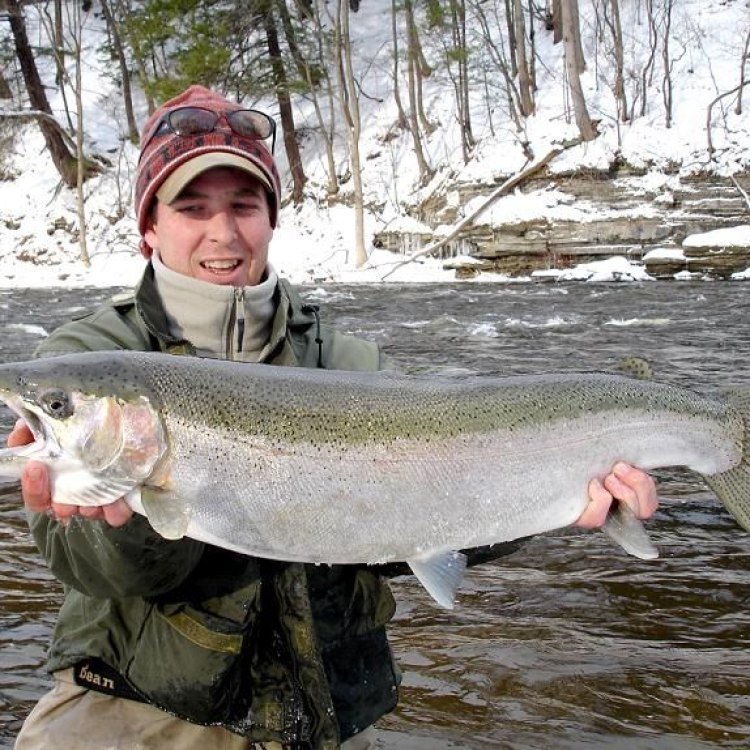
Steelhead Salmon
- Adult Size: Up to 55 inches
- Average Lifespan: 5 to 11 years
- Reproduction: Anadromous
- Reproductive Behavior: Spawning migration
- Sound or Call: No specific sound or call
- Migration Pattern: Migratory
- Social Groups: Solitary
- Behavior: Strong swimmers and jumpers
- Threats: Overfishing, habitat destruction, pollution, climate change
- Conservation Status: Least Concern (IUCN)
- Impact on Ecosystem: Key species in freshwater and marine ecosystems
- Human Use: Commercial and sport fishing
- Distinctive Features: Distinctive red or pink stripe along the sides, large and strong tail
- Interesting Facts: Steelhead Salmon can adapt to freshwater and saltwater environments, and are capable of returning to their freshwater birthplace to spawn.
- Predator: Orcas, sea lions, bears, birds
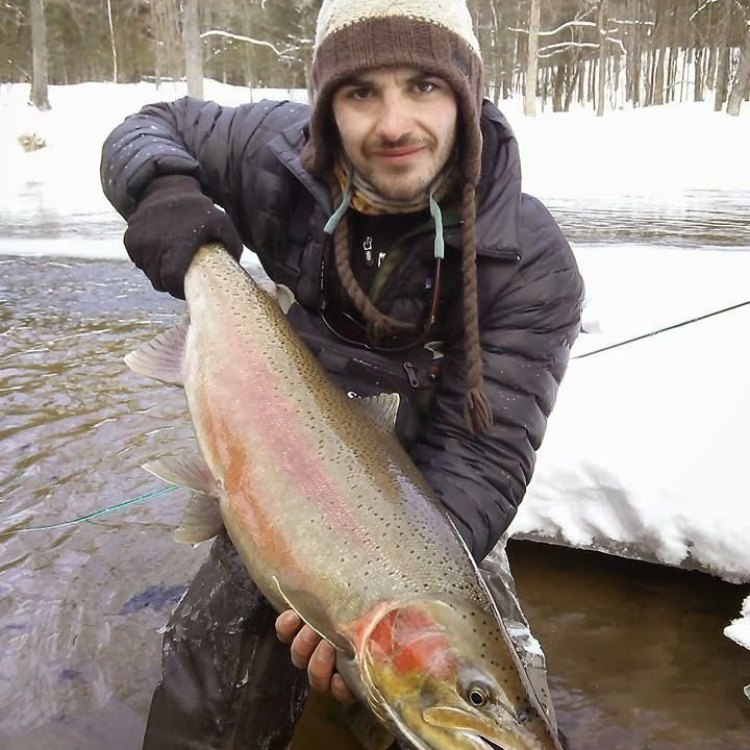
Oncorhynchus mykiss
The Story of the Mighty Steelhead Salmon: A Captivating Tale of the Wild
There is a species of fish that is not only known for its impressive size and strength, but also its unique ability to adapt and thrive in different environments. This remarkable fish is the steelhead salmon.Found in the Pacific Ocean and its tributaries, the steelhead salmon is a popular game fish known for its elusive nature and ferocious fighting style. But there's more to this fish than just its value as a recreational catch PeaceOfAnimals.Com. In fact, the steelhead salmon plays a vital role in both freshwater and marine ecosystems, making it a key species in maintaining the balance of the wild.
So, let's dive into the story of the mighty steelhead salmon, from its remarkable features to its crucial role in the wild and its interactions with humans.
The Basics: Size, Lifespan, and Reproduction
First, let's start with some basic facts about the steelhead salmon. As an adult, this fish can grow up to an impressive 55 inches in length, making it one of the largest salmon species. They also have an average lifespan of 5 to 11 years.But what makes the steelhead salmon unique is its reproductive behavior. They are anadromous, which means they are born in freshwater but spend the majority of their adult life in the ocean, and then return to their birthplace to spawn. This remarkable journey is known as spawning migration.
During this migration, the steelhead salmon embark on a long and challenging journey, swimming upstream against strong currents and leaping over obstacles to reach their spawning grounds Saint Shepherd. This behavior demonstrates their incredible strength and determination, making them a symbol of resilience in the wild.
The Steelhead's Song: Sound and Call
While many species of fish have distinctive sounds or calls, the steelhead salmon does not. They are silent creatures, with no specific sound or call. However, this does not take away from their charm and beauty.As they make their way upriver, their brilliant pink and red colors glisten in the sunlight, creating a mesmerizing and enchanting sight to behold. And their grace and agility in the water are a form of music in itself, as they navigate through the currents and leap through the air.
Migratory Patterns and Social Behavior
The steelhead salmon is a migratory species, moving between freshwater and saltwater environments throughout their life. This behavior is what allows them to adapt and thrive in different habitats.In freshwater, they are typically solitary creatures, swimming and foraging on their own. But in the ocean, they may form small social groups, often feeding and migrating together. This shows their intelligence and the ability to adapt to their surroundings, whether they are in the vast ocean or in a smaller freshwater stream.
As strong swimmers and jumpers, the steelhead salmon is often seen making impressive leaps out of the water, creating a spectacular display for onlookers.
Threats to the Mighty Steelhead Salmon
Unfortunately, the steelhead salmon is facing numerous threats that endanger its survival. From overfishing to habitat destruction, pollution, and climate change, there are many challenges that this species must overcome to survive.Overfishing, in particular, has had a significant impact on steelhead populations. The demand for this prized fish has led to a decline in its numbers, with some populations being deemed endangered or even extinct. This highlights the importance of sustainable fishing practices to preserve this species for future generations.
Habitat destruction, such as dam construction and deforestation, also poses a threat to the steelhead salmon. These activities can disrupt their spawning grounds and impact their ability to successfully complete their spawning migration.
Pollution and climate change also play a role in the decline of the steelhead salmon. Pollution can contaminate their habitats and reduce the quality of the water they need to survive. And with warming temperatures and changes in ocean currents, the steelhead salmon's ability to adapt and thrive may be compromised.
Conservation Status and Role in the Ecosystem
Despite these threats, the steelhead salmon is currently classified as "Least Concern" by the International Union for Conservation of Nature (IUCN). This means that while there are concerns about their population, they are not yet at risk of extinction.But even with this status, the steelhead salmon plays a crucial role in both freshwater and marine ecosystems. As a keystone species, their presence has a significant impact on the entire ecosystem, and their absence can lead to imbalances and cascading effects.
In freshwater, the steelhead salmon's spawning migration brings nutrients from the ocean into the river, enriching the ecosystem and providing a valuable food source for other species. And in the ocean, they play a vital role in the food chain, providing nourishment for predators such as orcas, sea lions, bears, and birds.
The Human Connection: Commercial and Sport Fishing
Humans have had a long history of interactions with the steelhead salmon. They have been a valuable food source for many indigenous communities, and their populations have also been a target for commercial fishing.In recent years, the popularity of sport fishing for steelhead has grown, with fishing guides and outfitters offering trips to catch this prized fish. However, with the decline in steelhead populations, there have been regulations put in place to limit catch and protect the species.
When done responsibly and sustainably, sport fishing for steelhead can benefit both the economy and the species itself. It provides a source of income for local communities and can also contribute to conservation efforts through the funding generated from fishing licenses and permits.
The Steelhead Salmon: A Fish Like No Other
From its remarkable abilities to adapt to different environments to its crucial role in maintaining a healthy ecosystem, the steelhead salmon is truly a special fish. It is a symbol of strength, resilience, and balance in the wild, and its presence enriches our world in more ways than we can imagine.With proper conservation efforts and responsible fishing practices, we can ensure that the mighty steelhead salmon continues to thrive for generations to come. So let's do our part to protect this remarkable species and appreciate its unique features and its captivating tale in the wild.
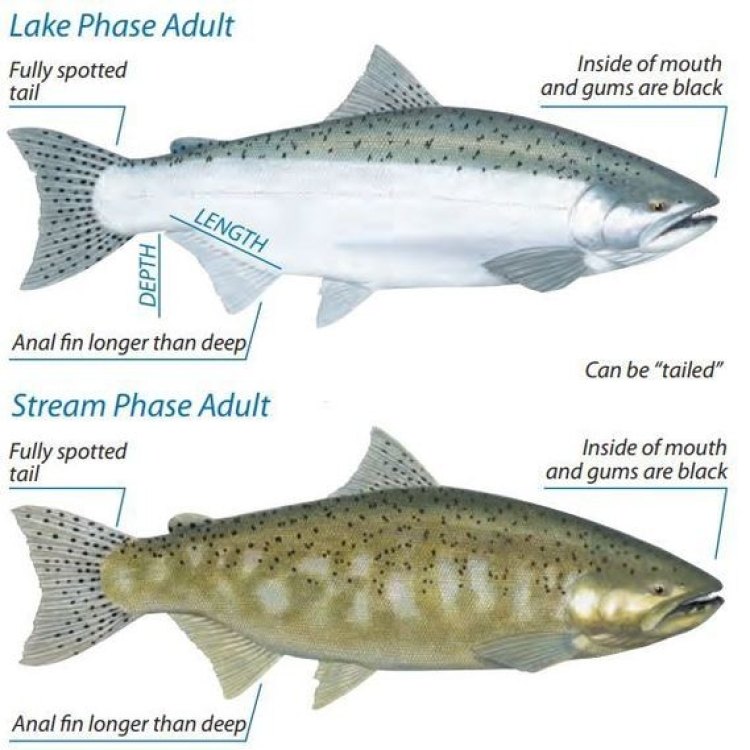
The Fascinating Life of Steelhead Salmon: A Master of Freshwater and Ocean
Disclaimer: The content provided is for informational purposes only. We cannot guarantee the accuracy of the information on this page 100%. All information provided here may change without prior notice.


